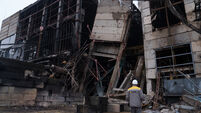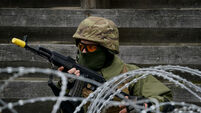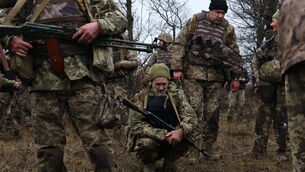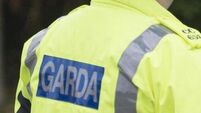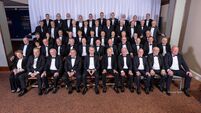Rescuers battle to reach buried quake survivors
Soldiers fought their way through a torrent of mud and rocks at a hot spring today where several people were believed to be buried after an earthquake hit northern Japan, killing at least seven and injuring more than 200.
Rescuers, often forced to resort to shovels and buckets, raced to dig their way through the mire as helicopters kept watch overhead and troops on the ground used backhoes to unblock roads covered by tons of fallen rock, dirt and trees.








